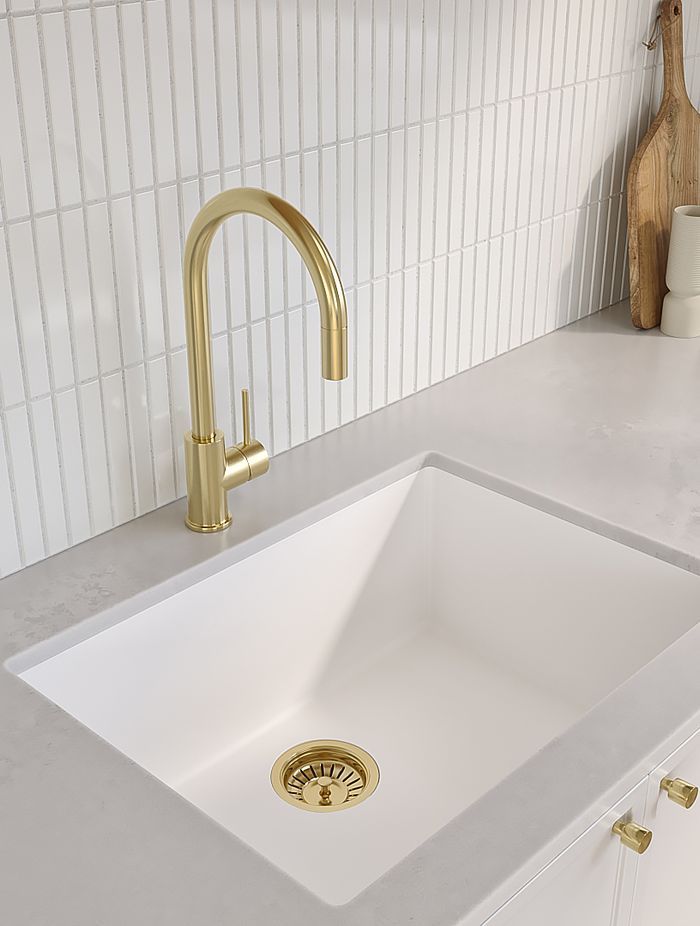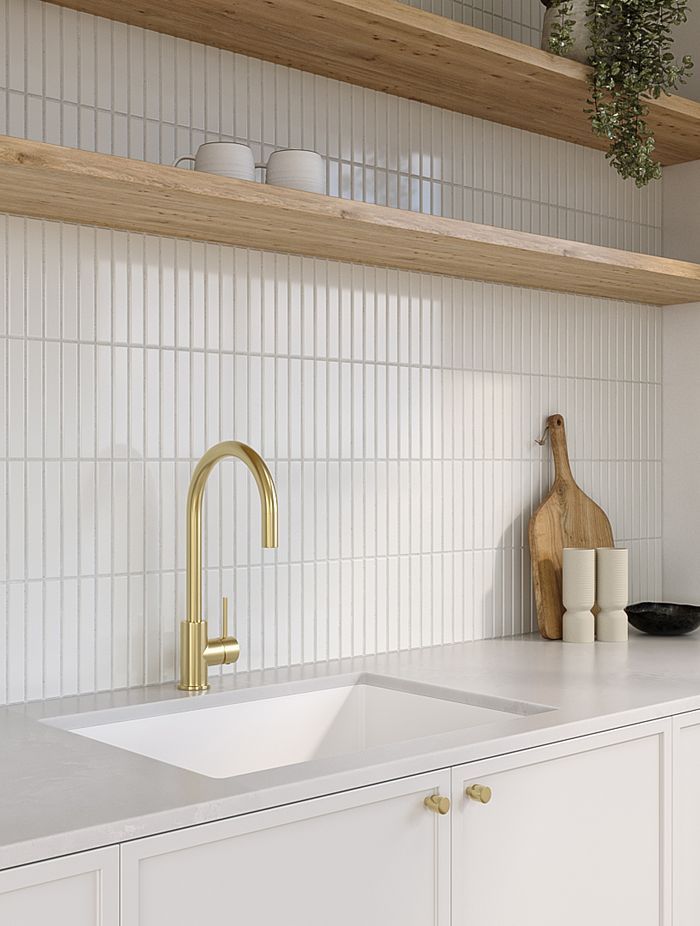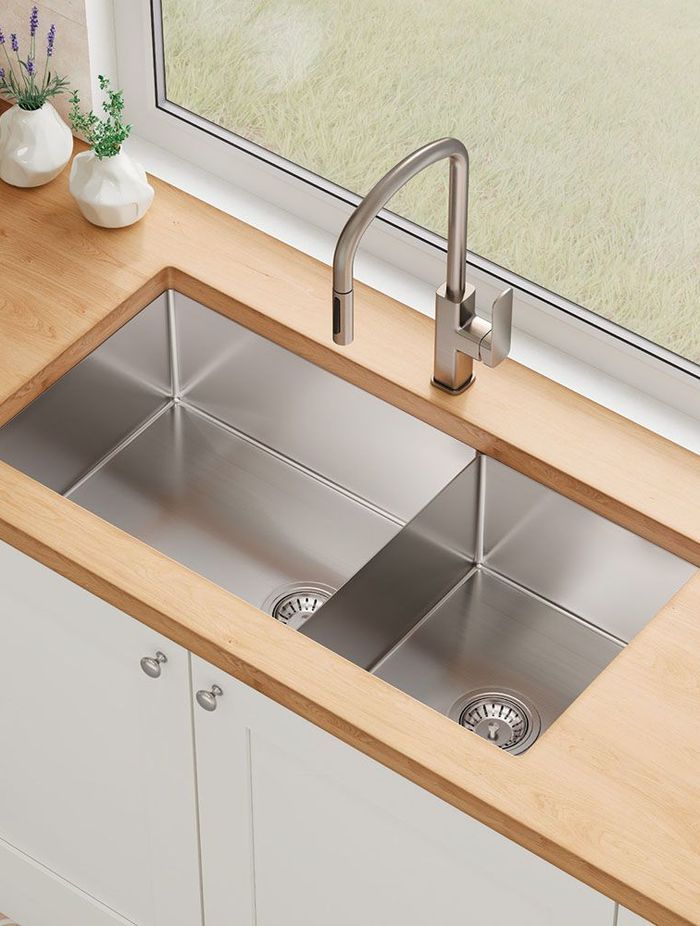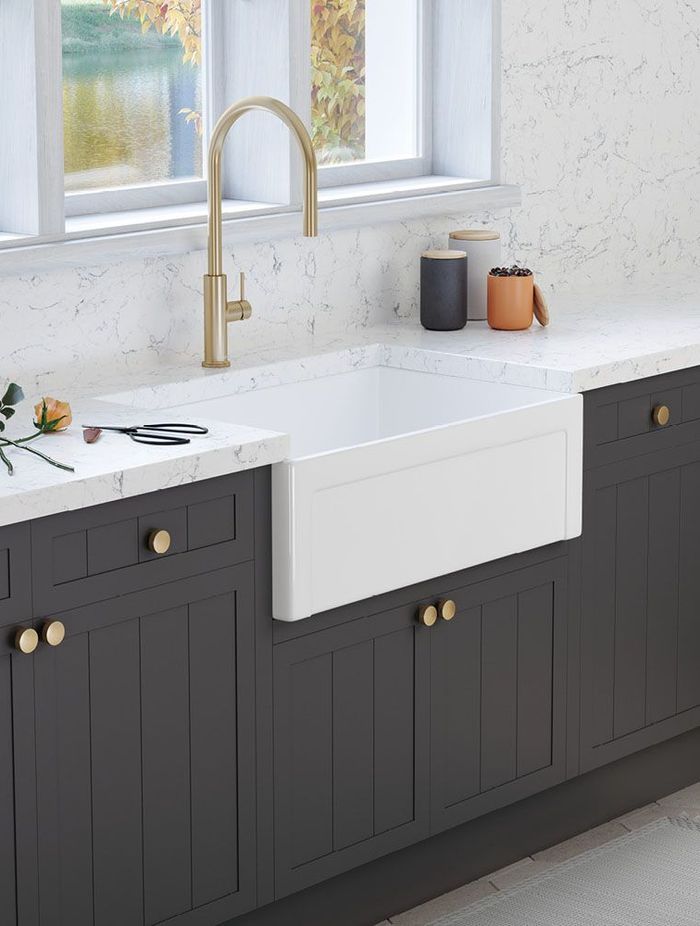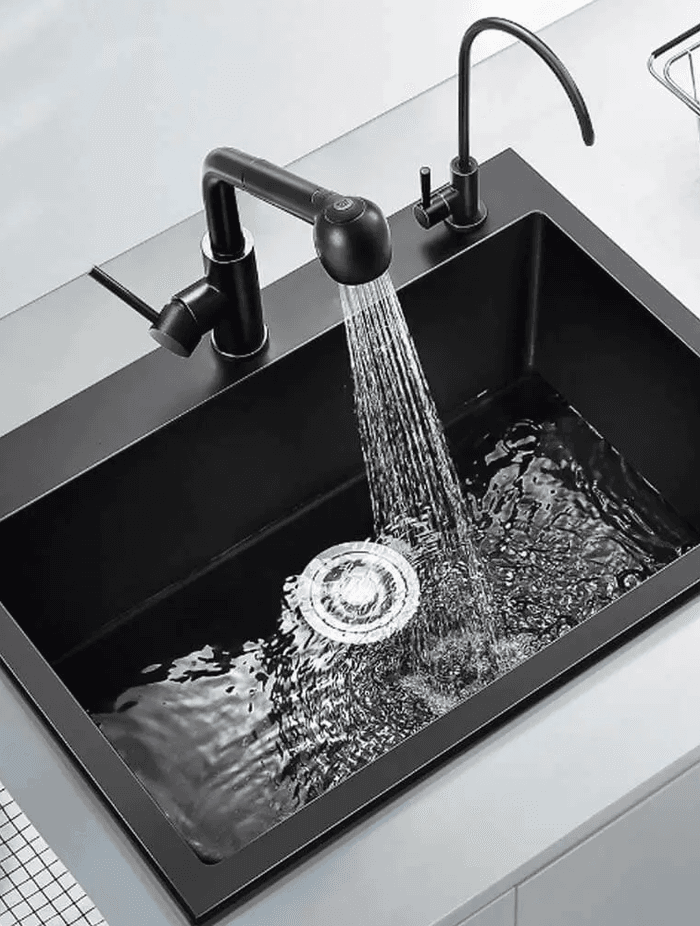Kitchen sink sizes: tips on choosing the right fit
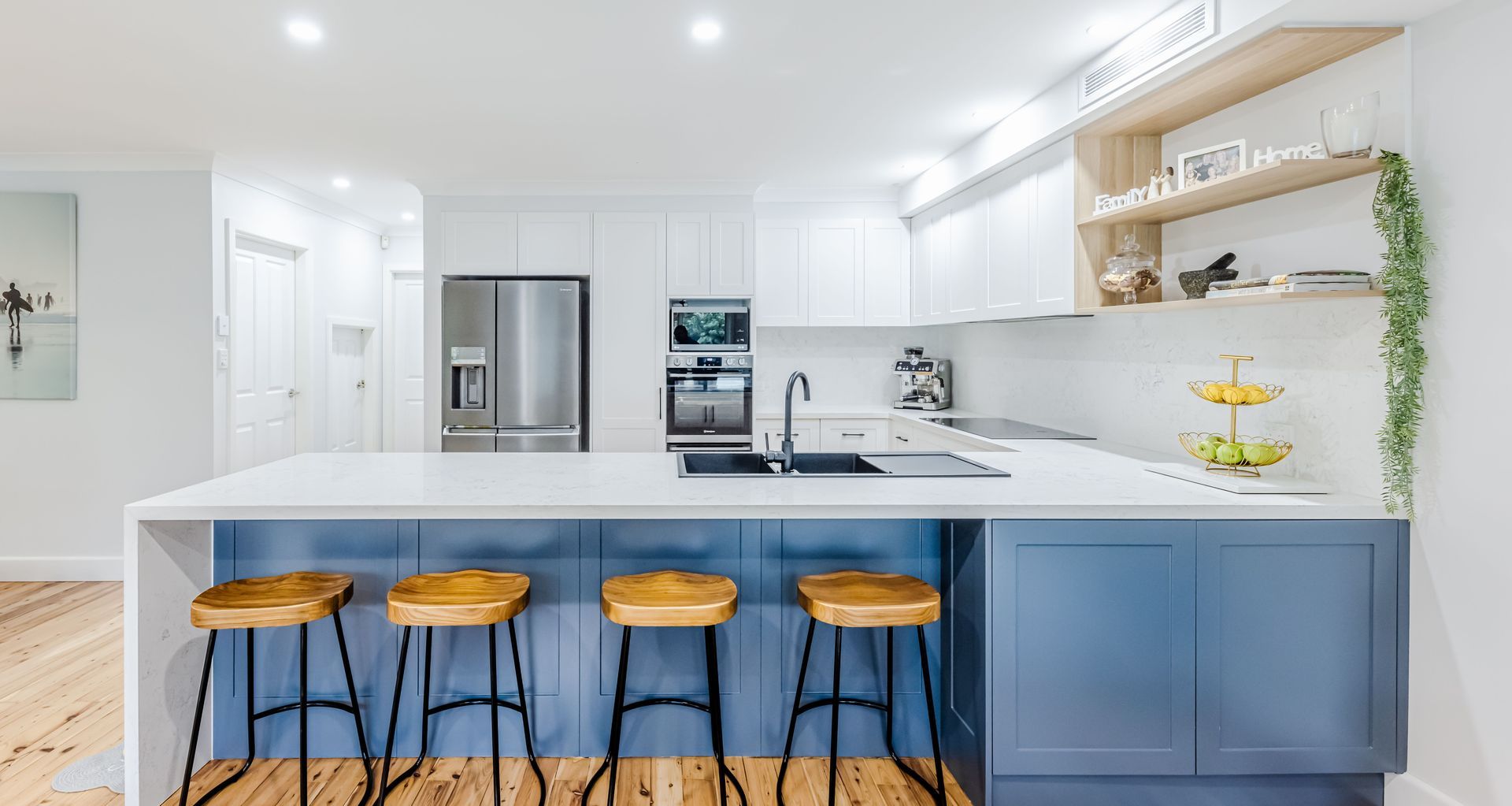
Plenty of different kitchen sinks are available, but to choose the right one for your kitchen, it's important to know the typical dimensions and sizes you can expect. After all, you need to ensure you have enough room to clean your dirty dishes, large pots and pans while ensuring there's enough room for the sink not to impede any other kitchen fixtures.
What are standard kitchen sink sizes?
There's no set standard kitchen sink size; sizes generally depend on the style of the kitchen sink, such as if its an undermount, flush mount or farmhouse sink. The core distinction between sinks is whether they are single or double bowl. Regardless of their specific design—be it undermount, top mount, or any other—the dimensions of a single bowl sink will be similar to another single bowl, and likewise for double bowls.
Single bowl sinks
Dimensions for a single bowl sink typically range from:
- Length: 55.88 cm to 81.28 cm
- Width: 40.64 cm to 45.72 cm
- Depth: 17.78 cm to 25.4 cm.
Double bowl sinks
Dimensions for a double bowl sinks typically range from:
- Length: 81.28 cm to 121.92 cm
- Width: 40.64 cm to 45.72 cm
- Depth: 17.78 cm to 25.4 cm.
Considerations for choosing the right kitchen sink size
Selecting a new kitchen sink is essential in remodelling or designing your kitchen. The sink is more than just a functional fixture; it's where many of us spend time washing dishes, cleaning pots and pans, and prepping meals. Here are some crucial considerations to keep in mind:
The style of the sink
The main factor determining a kitchen sink's size is whether it's a single or double bowl. However, the style also plays a part. For instance, undermount sinks fit beneath the worktop, farmhouse sinks have a front apron that might require more depth, top mount sinks sit on the worktop's surface, integrated sinks are moulded with the worktop, and corner sinks are designed for corner spaces. But regardless of style, always consider if the sink basin is single or double bowl first when looking at size.
Common kitchen sink styles you'll want to consider are:
Undermount sinks - Undermount sinks, positioned beneath the countertop for a sleek look without visible edges, are popular in modern kitchens and pair well with sturdy materials like granite, marble, or engineered stone.
Top mount sinks - These sinks, the most common style in kitchens, are set into a countertop cut-out, and their visible rim allows for easier installation and compatibility with a range of materials, including laminates, making them versatile for various kitchen designs.
Integrated sinks - Integrated sinks, made from the same material as the countertop, like stone or stainless steel, offer a sleek and cohesive look with no crevices for debris, ensuring easy cleaning and are often seen in modern kitchens; while typically available in standard single or double bowl sizes, their dimensions can vary based on the countertop's size.
Farmhouse sinks - Originally for homes without running water, farmhouse sinks feature a deep basin and a unique "apron" front, offering a rustic look popular in both modern and traditional kitchens and, made of materials like porcelain or fireclay, can exceed the dimensions of typical single or double sinks.
Corner sinks - Designed for corner placement in kitchens, these sinks range from single basins to elaborate two-basin designs across adjoining walls, challenging traditional layouts but optimising space and utilising otherwise neglected areas.
Sink space and counter space
Understand how much counter space you have available and how much of it you're willing to allocate to your sink. The balance between sink space and counter space is crucial, as it affects both your working area and sink utility.
Sink style
The style of your sink can dictate the overall look of your kitchen. Whether it's an undermount, farmhouse, drop-in, or integrated sink, the sink style you choose will either complement or dictate the aesthetic of your kitchen. It's vital to select a design that not only aligns with your taste but also with the overall theme of your kitchen.
Sinks width
The width of the sink, measured up to the sink's rim, can influence the number of dishes it can accommodate and its compatibility with large pots and pans. If you often cook with larger utensils, you might opt for a wider sink that can easily manage your washing needs.
Functionality and usage
Consider how you usually use your kitchen. If you spend a lot of time washing up by hand, especially with big pots and pans, you might prioritise a deeper, large kitchen sink. On the other hand, if you mainly use a dishwasher and only need the sink for minor tasks, a smaller or double basin may be more appropriate. For those who don't require much depth, a shallow sink can be a practical choice.
Material and durability
The sink's material can affect its longevity, maintenance requirements, and appearance. For example, stainless steel sinks are durable and easy to clean. Other options like porcelain, granite composite, and fireclay exist, each with its own set of pros and cons.
Choosing the right size sink for your kitchen
When choosing a kitchen sink, it's essential to think about style, space, and how you use your kitchen. Whether you prefer a modern undermount or a classic farmhouse look, the right fit should complement your kitchen's design and meet your day-to-day needs. Don't forget to consider the sink's width for larger dishes and the material's durability for long-term satisfaction.
Related article: 6 most popular types used in Australia in 2024

